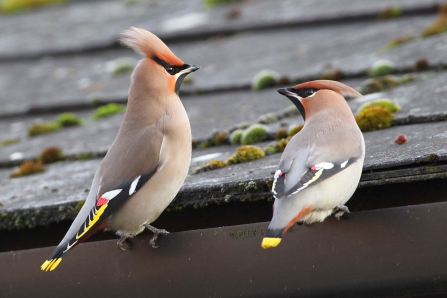
Our top 10 wildlife sightings for November
Waxwings congregating near a construction site. Picture: Terry Whittaker/ 2020Vision

Waxwings
The waxwing is one of the UK's most colourful winter visitors. With its striking orange-and-black head, white-striped wings and yellow tail tip, it looks almost tropical picking the berries off trees.
In some years, thousands of these birds flock to the UK – in these ‘waxwing winters’ look out for large groups descending on anything with berries, such as rowan trees, in car parks and gardens.
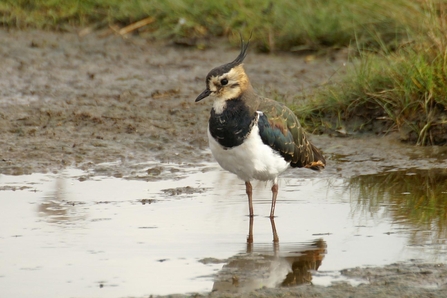
Lapwing - Credit David Longshaw
Lapwings
The lapwing is another highly attractive bird: along with its iridescent green wings, white belly and smart black bib, it has a punky crest of feathers sticking out of its head. In winter, large flocks join other birds on farmland and wet fields, sometimes in their thousands.
Look out for them at our Chimney Meadows reserve near Witney or our Upper Ray Meadows network of reserves on the Oxon/Bucks border.
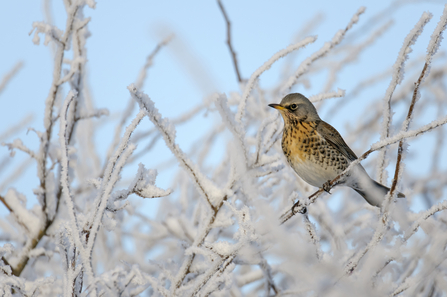
A fieldfare on a frosty winter tree. Picture: Chris Gomersall/ 2020Vision
Winter thrushes
Redwing and fieldfare are thrushes that visit the UK in large numbers each winter from colder parts of northern Europe. The redwing has a mottled brown-and-white coat with distinctive orange patches under its wings, while the fieldfare has grey, black and chestnut plumage, with a strange chuckling call.
We see both each winter at our Wells Farm site in South Oxfordshire - a working farm run in harmony with wildlife.
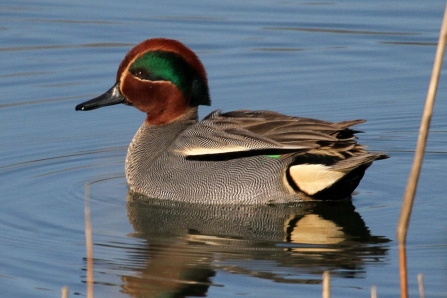
Teal by Margaret Holland
Teal
The teal is our smallest duck. Males are grey, with a speckled breast, a yellow-and-black tail, a chestnut-coloured head and a bright green eye patch. Females are mainly mottled brown, but both sexes show a bright green wing patch in flight. Listen out for the mournful but shrill whistle, an iconic winter sound.
They can often be seen in large numbers along with wigeon and pintail at flooded gravel pits like our College Lake reserve near Aylesbury.
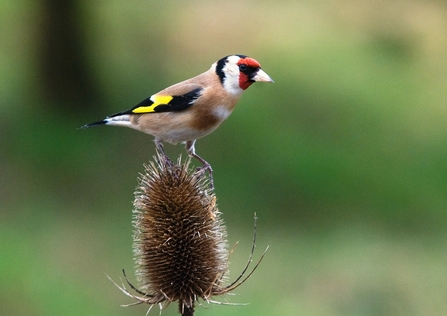
Goldfinch by Bob Coyle
Finches and allies
Chaffinches, greenfinches, goldfinches, yellowhammer and corn buntings all feed and roost collectively this time of year. Our Cholsey Marsh nature reserve near Wallingford is a particularly good place to spot corn buntings, but you can see all these birds on arable farmland, pecking up spare grain and raiding hedgerows for berries and seeds.
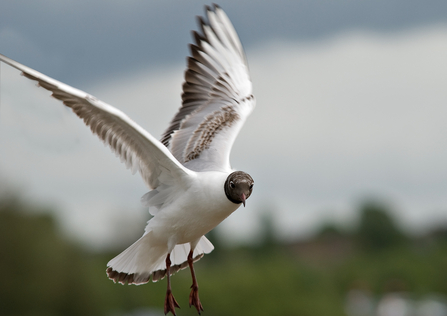
Black-headed gull. Picture: Bob Coyle
Gulls
Although we often talk about 'seagulls', there's actually no such thing! We have seven species of gull regularly breeding in the UK, and others turn up more rarely. While they’re often seen in coastal areas, they also frequently come inland.
As autumn turns to winter, we see lesser black-backed, black-headed, herring and common gulls on flooded fields across our area, as well as a few rarer species such as the yellow-legged.
Many of these birds roost at our nature reserves including Calvert Jubilee near Bicester, College Lake and Hosehill Lake near Reading.
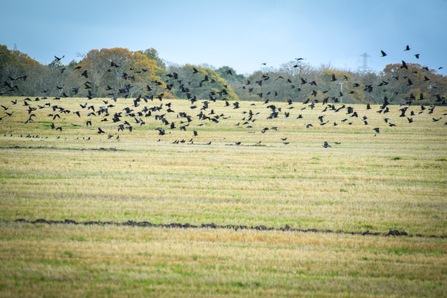
A flock of rooks taking flight from a field in autumn. Picture: Flying400/ Wikimedia Commons
Clouds of corvids
When cold weather sets in, rooks, crows and jackdaws all flock together to form huge groups, sometimes with thousands of birds, that feed and sleep together. We often see massive groups at our Greenham Common reserve near Newbury.
The jackdaw can be distinguished by its grey nape. The raven is the largest with a wingspan up to 1.2 metres.
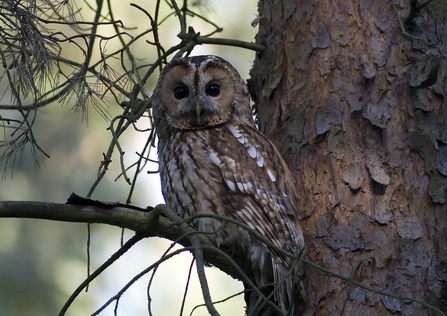
Damian Waters / Drumimages.co.uk
Territorial tawnies
We have already heard male tawny owls hooting late into the night this autumn to mark their territory. This behaviour is a prelude to pair bonding ahead of breeding in the spring.
We have owls at many of our reserves, but as Europe's commonest species you can find it nesting in hollow trees in parks and gardens all over our region.
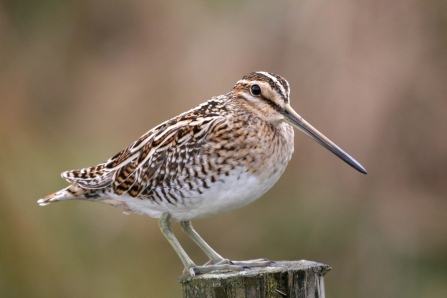
A snipe, one of the rare wading birds whose habitat the Expressway corridors threaten © Margaret Holland
Snipe
Wander through the Upper Ray Meadows this month and you might well have a shock as a surprise snipe suddenly flies up from under your feet, squawking and rapidly disappearing into the distance or away over a hedge. Woodcock play a similar game in woodland but are much rarer.
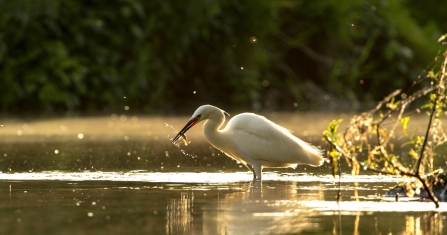
Little egret with a successful catch, by Jason Buck.
Egrets
With their pure white feathers, black legs, yellow feet and stylish quiffs, little egrets are exotic looking beautiful birds. Once a rare winter visitor, it is increasing as a UK breeding species. As winter comes, our resident birds area joined by thousands of continental visitors.
The closely-related great white and cattle egrets are still rare, but are also increasing. Look out for them on the lake at our Nature Discovery Centre in Thatcham.
Stay up-to-date with our work
Sign up below to receive the latest news from BBOWT, tips about how you can help wildlife, plus information on how you can get involved.

